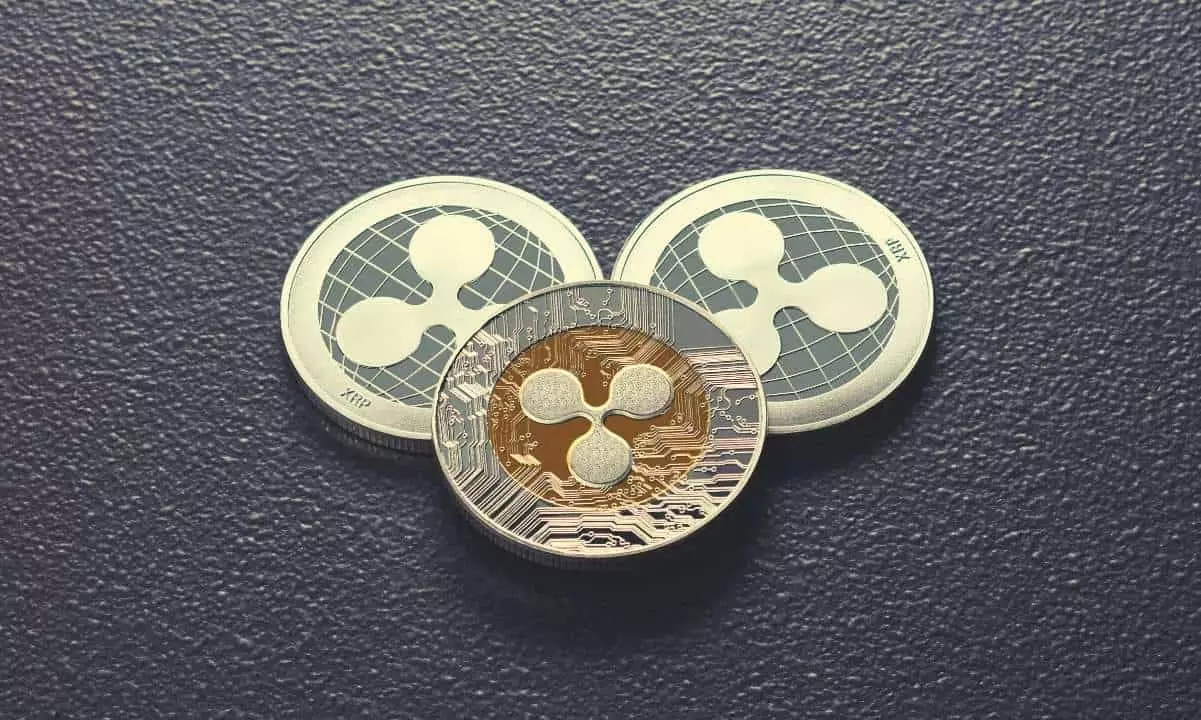The launch of futures contracts for cryptocurrencies on platforms like the Chicago Mercantile Exchange (CME) marks a significant milestone in the financial landscape. Initially, these products were viewed as a harbinger of institutional acceptance, implying a higher legitimacy for digital assets. However, the muted response to the recent launch of XRP futures reveals a stark reality: institutional appetite does not equate to unwavering investor enthusiasm. Unlike Bitcoin and Ethereum, which experienced monumental trading volumes upon debuting their futures contracts, XRP’s entry has left much to be desired, ultimately serving as a mirror reflecting not only market conditions but also broader investor sentiment.
A Comparison of Launch Trajectories
To truly grasp the underwhelming debut of XRP futures, we must benchmark it against its predecessors. When Bitcoin futures were unleashed in December 2017, the market was in the throes of a euphoric bull run. With over $100 million in trading volume on day one, Bitcoin captured public and media attention, leading to a surge in demand that Ethereum was fortunate enough to partially inherit when it launched its own futures in February 2021. With ETH, the climate was similarly bullish, riding waves of interest sparked by decentralized finance (DeFi) and non-fungible tokens (NFTs).
But the situation for XRP could not be more different. As it stepped onto the CME trading floor, it found itself in a market still recovering from previous declines, heavily laden with regulatory concern. It adds an interesting layer to the investor psyche; where Bitcoin and Ethereum found fertile ground for growth, XRP seems to be planted in rocky soil, and its performance reflects that unfortunate misalignment.
Market Sentiment: A Far Cry from Bullish
The figures speak volumes. With XRP futures clocking in at just over $19 million in combined notional volume, it’s difficult to ignore the elephant in the room. This figure paled in comparison to Bitcoin’s debut, further prompting skepticism among investors. One could argue that XRP’s entry into futures trading is not merely about the numbers but rather illustrates a growing investor wariness surrounding the cryptocurrency. The chilling winds of uncertainty stemming from ongoing legal disputes with the U.S. Securities and Exchange Commission (SEC) continue to cast a shadow, giving potential investors pause.
The recent rejection of a proposed $50 million settlement between the SEC and Ripple Labs by Judge Analisa Torres encapsulates the overarching uncertainty. This faltering momentum raises pertinent questions about XRP’s capacity to regain traction—an unsettling reality for a token that once had the promise of revolutionizing cross-border payments.
Contract Specifications and Market Dynamics
Another critical component to consider is the evolving contract specifications that allow futures trading in a crowded marketplace. Unlike Bitcoin and Ethereum contracts that debuted when mainstream cryptocurrency derivatives were scarce, XRP finds itself amidst a plethora of alternatives. This saturation diminishes the appeal of XRP futures and creates an uphill battle for any meaningful volume to emerge, especially when platforms such as Binance and Coinbase have already entrenched themselves as market leaders in cryptocurrency derivatives.
Investor behavior often gravitates toward established platforms that can command trust, especially following the crypto market’s turbulent history. In this sense, XRP is fighting not just against its intrinsic challenges, but against a marketplace that is increasingly complex and competitive.
The Ripple Effect: Navigating Regulatory Waters
When examining the broader implications surrounding XRP’s future trading options, the regulatory landscape cannot be overlooked. The ongoing legal tussles with the SEC jeopardize not just XRP’s current standing but also its strategic positioning within the cryptocurrency space. This uncertainty plays a pivotal role in shaping public opinion and investor sentiment, leading to a phenomenon where even innovative technologies find it hard to break through the noise and secure robust market participation.
In short, the mixed results of XRP futures are indicative of larger systemic issues: how do innovations flourish under the specter of regulatory scrutiny? The recent stumbles cast a perceptible gloom over what was once heralded as a transformative financial tool, raising troubling questions about the ultimate fate of XRP in the ever-evolving landscape of cryptocurrency futures trading.


Leave a Reply